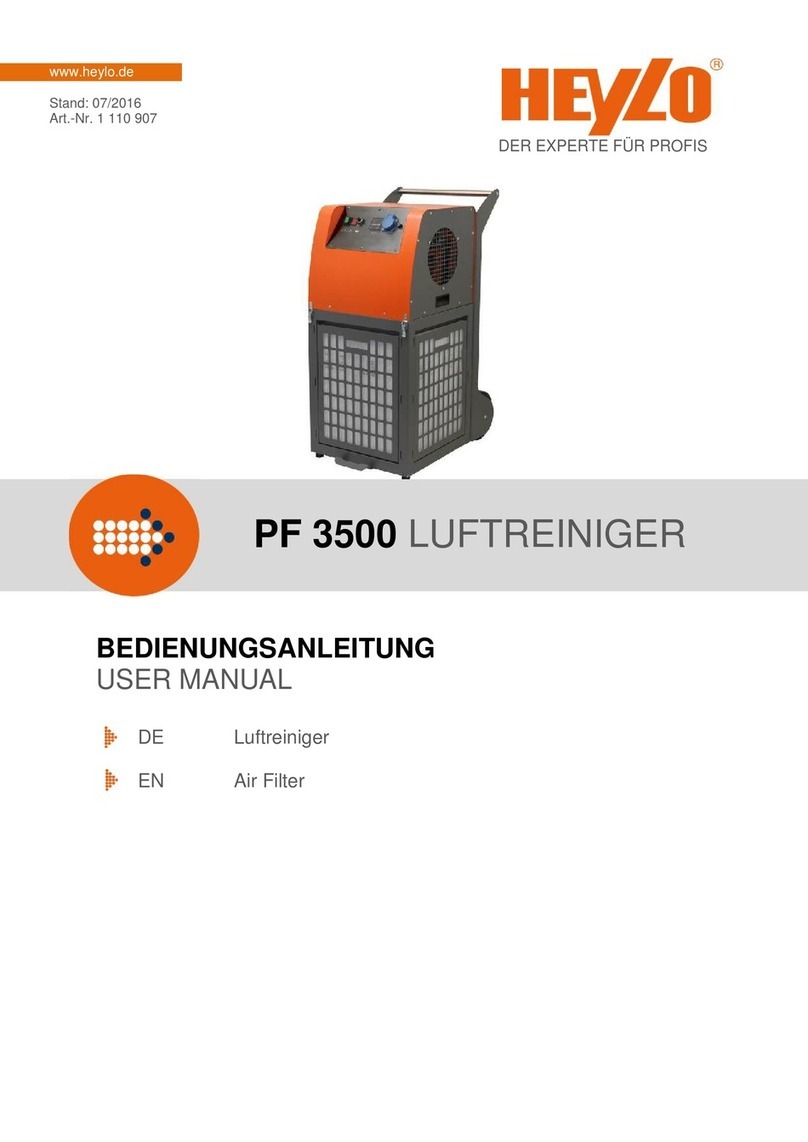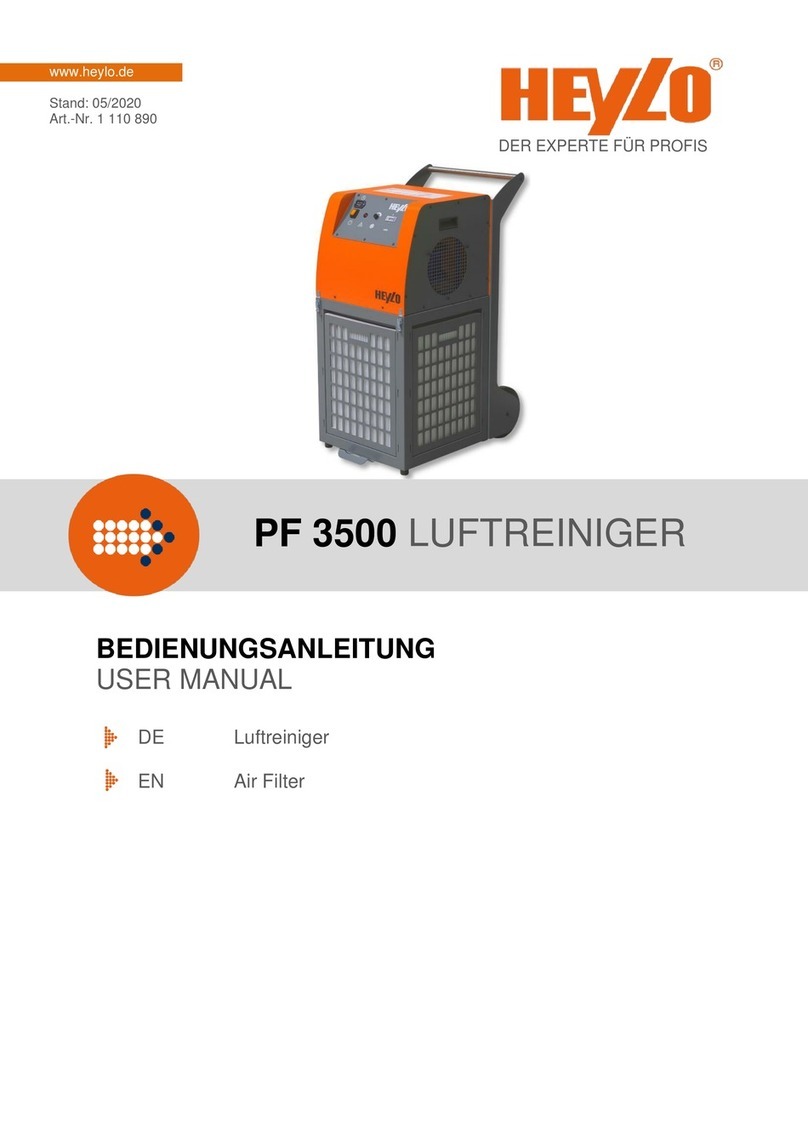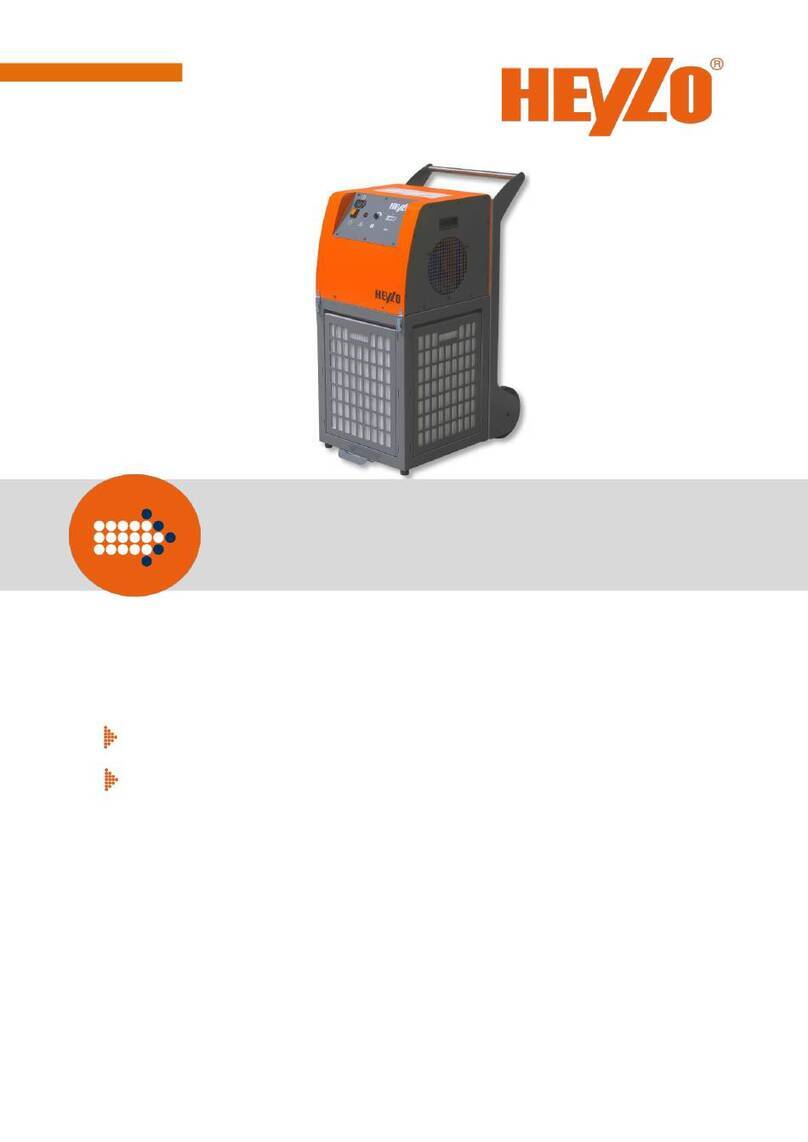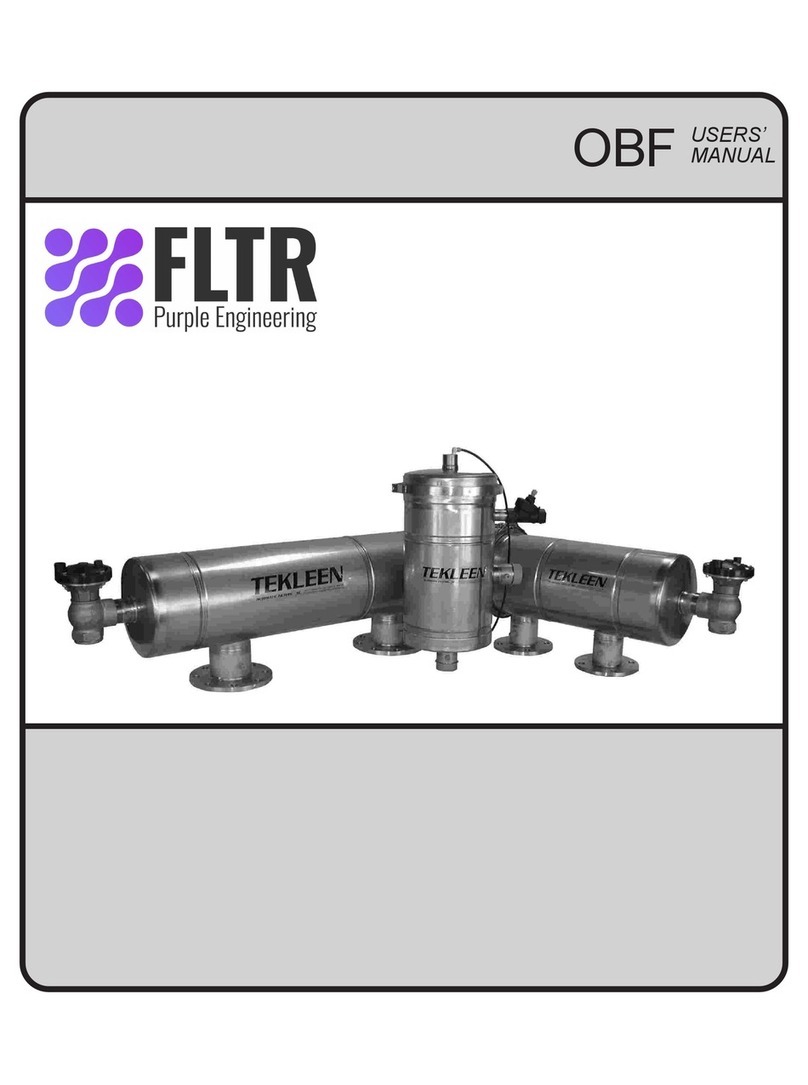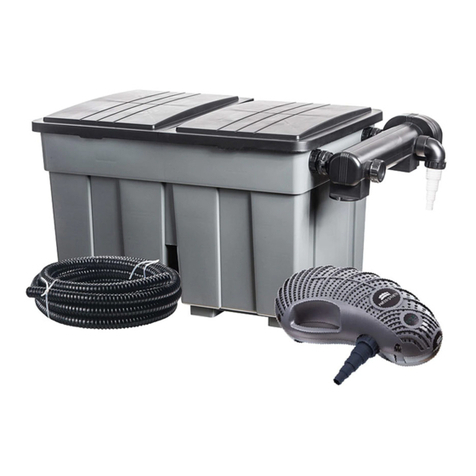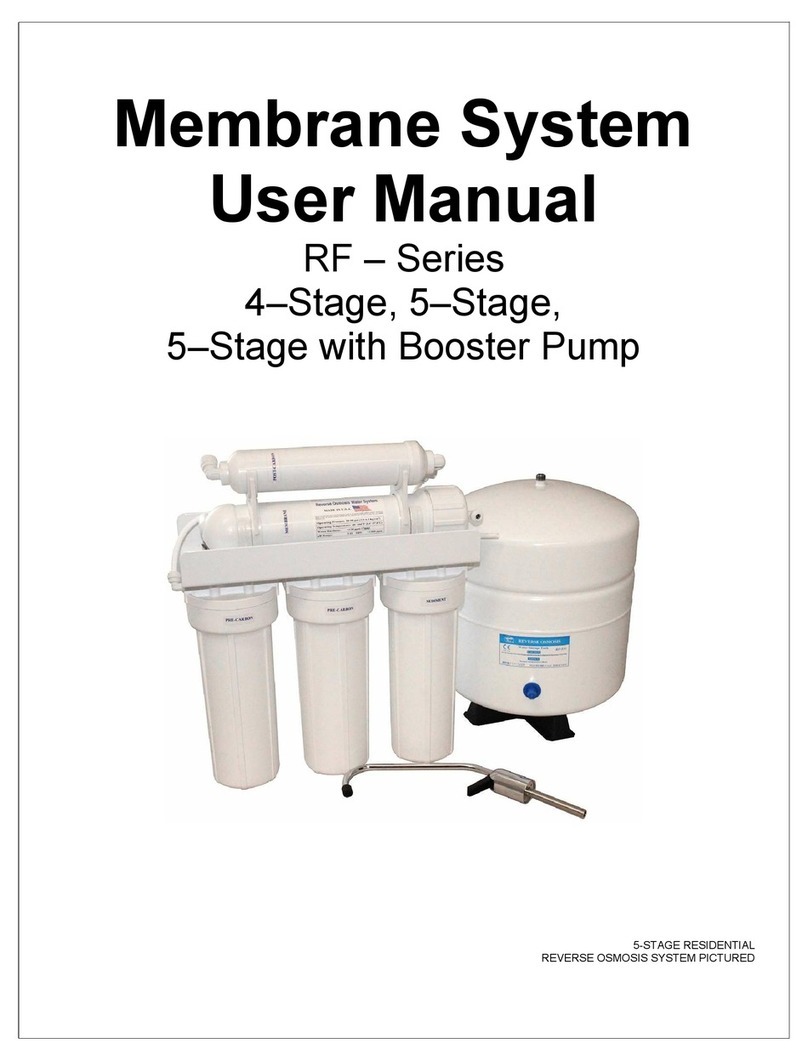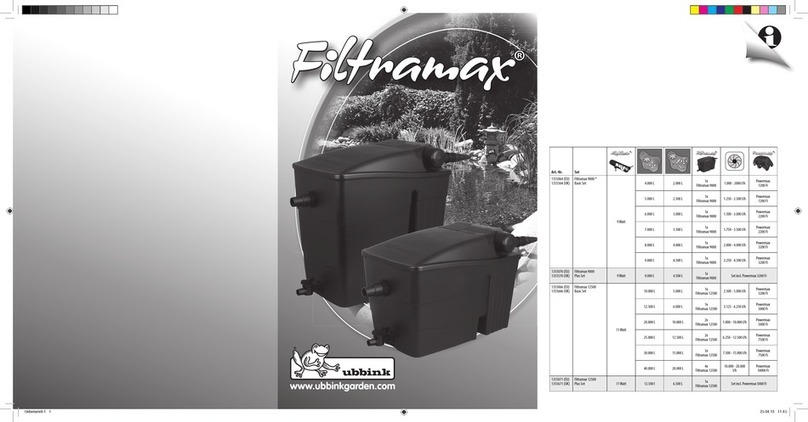
5 DE
Wenn die Filterwechselanzeige während der Arbeit aufleuchtet, sind die Vorfilter sofort
auszuwechseln. Weitere Informationen finden Sie im Abschnitt „Filterwechsel“ und „Instandhaltung“.
Verlegung der Schläuche: Der Ansaugschlauch, bzw. die ganze Kombination selbst, ist möglichst
nahe an den Entstehungsort der Luftverunreinigung heranzuführen. Mit zunehmender Entfernung des
Ansaugschlauches vom Entstehungsort der Luftverunreinigung sinkt der Anteil der direkt vom
Luftreiniger erfassten Luftverunreinigungen überproportional!
Zur besseren Erfassung an der Entstehungsstelle bietet HEYLO einen Standfuß für
Schlauchanschluss-Stutzen der Ansaugseite. Um das Schlauchende höher zu positionieren, können
die Schläuche mit Zurrgurten auch an Teleskopstangen befestigt werden.
Es ist auf eine zeitnahe Nachführung der Absaugschläuche im Arbeitsbereich zu achten. Schläuche
sind möglichst knickfrei und geradlinig zum Luftreiniger zu führen. Gegebenenfalls sind hierzu z. B.
zur Überwindung von Höhenunterschieden Behelfskonstruktionen zu errichten (z. B. Abschrägung
durch unterstützende Holzbohle). Im Bereich des Ansaugschlauches werden
Querschnittseinengungen durch Knicke durch den Ansaugluftstrom verstärkt. In der Abluftleitung wirkt
der Abluftstrom einer Querschnittsverengung durch Knicke entgegen.
Der Ansaugschlauch ist so anzuordnen, dass verunreinigte Luft vom Einatmungsbereich des
Beschäftigten weggeführt wird und dem Beschäftigten Frischluft bzw. gereinigte Luft zugeführt
wird.
Die gereinigte Abluft des Luftreinigers ist in gut belüftete Bereiche bzw. ins Freie zu führen. Eine
Rückführung gereinigter Luft in den Arbeitsbereich ist nur zulässig, wenn gleichzeitig eine
ausreichende Grundlüftung mit Frischluft gewährleistet ist. Hierzu ist ggf. ein zweiter Luftreiniger zur
Raumlüftung einzusetzen. Bitte beachten Sie hierzu die nationalen Arbeitsschutzvorschriften.
Erforderlicher Luftwechsel: Der erforderliche Luftwechsel richtet sich nach Art und Menge des
Luftschadstoffes. Entsprechend können Luftwechselraten zwischen dem 3-fachen und 20-fachen des
Raumvolumens erforderlich werden.
Die Berufsgenossenschaften empfehlen einen 15fachen Luftwechsel. Der Arbeitsplatzgrenzwert liegt
bei quarzhaltigen A-Stäuben bei 1,5mg/m³ und bei E-Stäuben bei 10mg/m³ (TRGS 900).
Beispiel: Gefordert ist ein 15facher Luftwechsel beim Raumvolumen von 50 m³.
Die erforderliche Luftmenge beträgt 15 x 20 m³, also mindestens 750 m³/Std. Der
StaubStop PLUS leistet mind. ca. 840 m³/Std.
Ein ausreichender Luftwechsel ist somit gegeben.
Genaue Anforderungen ergeben sich aus denen unter Punkt 6 aufgeführten Aufstellrichtlinien.
5. Filter / Filterwechsel
Filtersystem: Das Luftreiniger System StaubStop PLUS verwendet ein 2-stufiges Filtersystem. Die
erste Filterstufe besteht aus einem Vorfilter und die Haupt-Filterstufe aus einem robusten HEYLO
Hauptfilter in der Filterklasse M.
Filterwechsel: Unabhängig von der Filterwechselanzeige sind beide Filter nach jeder Arbeit mit
Schadstoffen zu wechseln. Ist die Zusammensetzung der angesaugten Partikel nicht bekannt, sollten
die Filter nach Gebrauch auf der jeweiligen Baustelle komplett gewechselt werden. Es sind beide
Filter auszuwechseln, damit die Verschmutzung (Kontamination) nicht in saubere Bereiche
verschleppt wird.
Standzeit der Filter: Die Standzeit der Filter richtet sich nach der angesaugten Staubmenge. Sehr
feiner Staub kann die Standzeiten stark verkürzen. Gesättigte Vorfilter sind auszutauschen, gesättigte
Hauptfilter können bis max. 5mal gereinigt werden.






